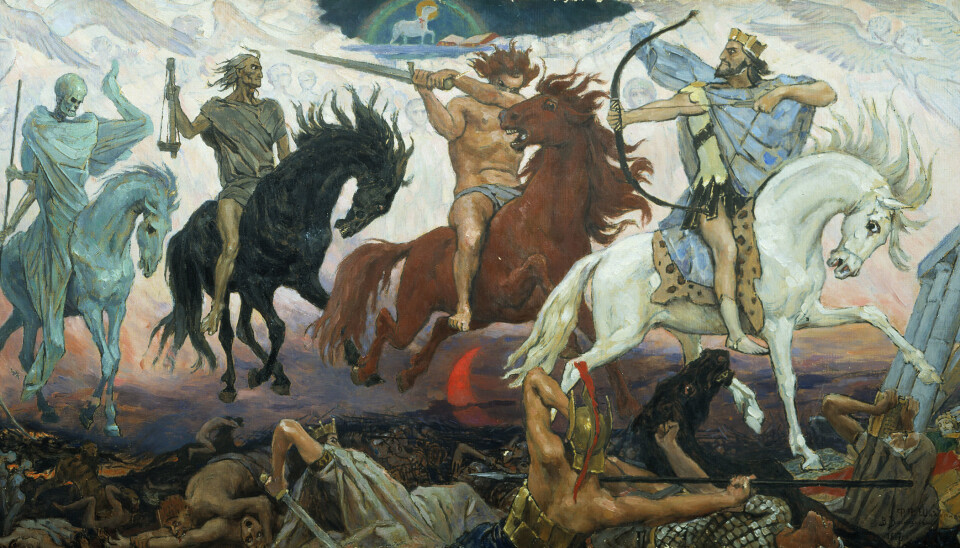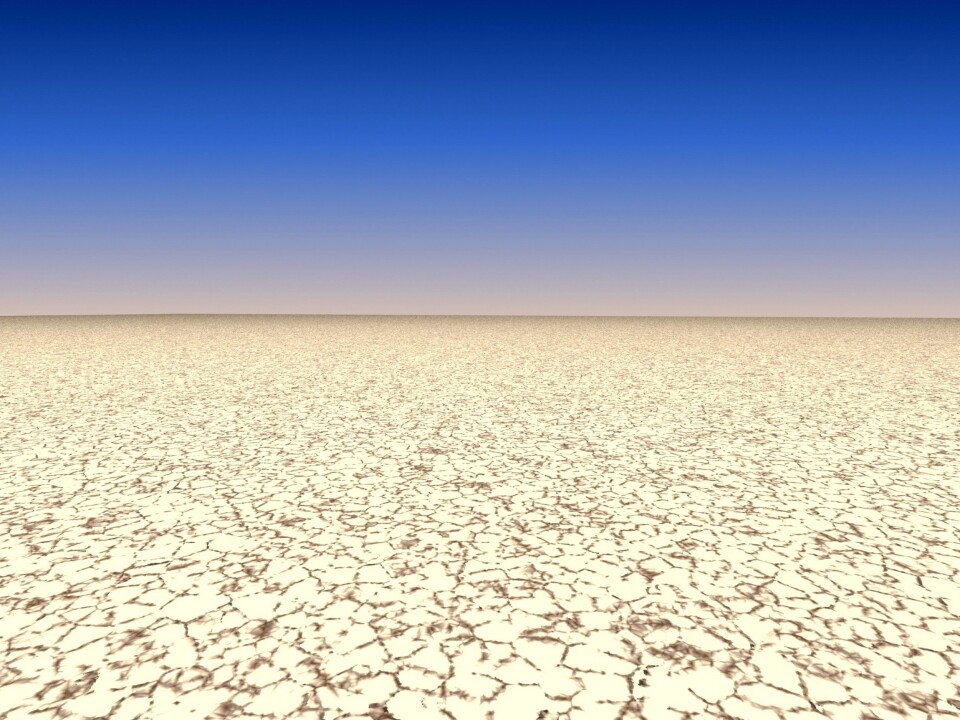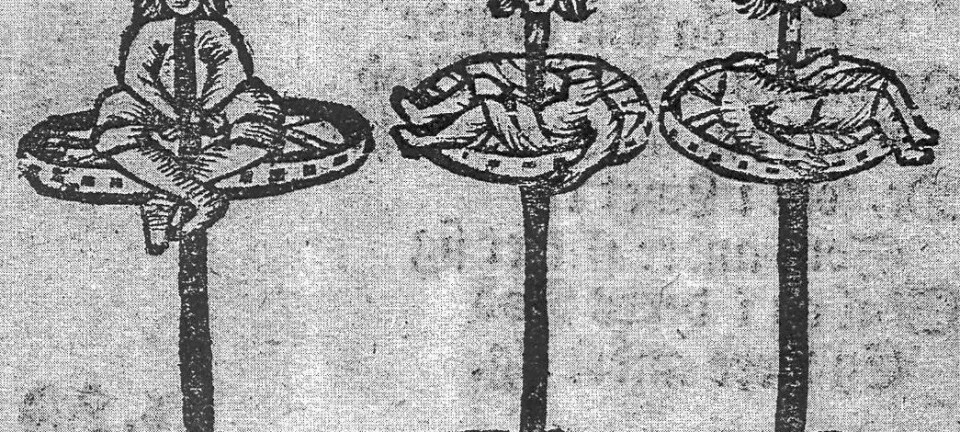
We fear that science will wipe us out
Our ancestors feared that a god would cause the Earth’s destruction. Today we dread man-made viruses, global warming and nuclear bombs – the underside of science and technology.
Our Earth is shaken by a gigantic earthquake. The sun goes black, the moon turns red as blood, and the blazing stars fall down to Earth.
All humans – kings and vagabonds alike – try to hide away in fear of the wrath of Jesus. Four horsemen ride out from heaven. Judgement Day has arrived and the battle between good and evil is about to begin.
The Book of Revelation tells us about the Christian view of how the world will come to an end. Today, however, not many people fear an apocalypse that involves four horsemen.
Instead, we worry that man, science and technology may be digging a mass grave for all of humanity. We fear man-made global warming, atom bombs and killer diseases created in laboratories.
We have always believed in Judgement Day

“From a historical perspective we can see that visions of doom and disaster are part of what it is to be human,” says Rikke Peters, a PhD who, as part of her history of ideas studies at Aarhus University, has looked at how people at various times though history have envisaged doomsday.
Science has changed doomsday
We have always had ideas of how the end of the world will come about:
-
For centuries, our Christian ancestors were very religious. They imagined that the world would perish in the battle between Jesus and Satan, as was described in the Bible.
Before that, they believed that Norse gods such as Odin and Thor would destroy the world in the final battle – Ragnarok – which they fought against their enemies, the giants. The great gods would die in battle and a great fire would spread across the whole of the Earth, after which the Earth would sink into the sea. -
The 18th and 19th centuries saw some enormous developments in science. This increased our ancestors’ understanding of the natural forces surrounding them. They understood the causes of volcanic eruptions, floods, meteor showers and epidemics. And they had come to realise that the gods didn’t necessarily play a part when the world was to come to an end.
The uncontrollable forces of Nature could do it by themselves. This is how the natural forces took on the lead role in the doomsday visions of this era. -
In the 20th century, the view emerged that we humans are in the process of digging our own graves through science and innovation. The use of toxic gases in World War 1, which killed thousands of soldiers, showed us that science could be used for creating disasters. And this idea was further cemented by the atom bombs that were thrown over Japan in World War 2.
This same fear of the underside of science is still very much alive today, where there appears to be a general consensus that our technology is to blame for the destructive global warming.
Doomsday adds meaning to life
Today we still fear the forces of nature – that a giant meteor might hit our Earth. And religious people still fear the wrath of their gods.
But for many, it seems more realistic that the man-made global warming will bring on the end of the world – something that’s frequently highlighted in the media.
“The media is currently focusing a lot on the man-made natural disasters – and the scare scenarios in particular get a lot of coverage,” says Peters, adding that these doomsday scenarios, though horrible, have a cleansing effect on our mental state. They add some sort of meaning to our lives because they inform us how the world will come to an end.
“It almost sounds perverted that we can seek relief in thoughts about the end of the world. But visions of doom add a degree of certainty to our lives,” she says.
“They provide a guiding meta-explanation of what will happen to humanity – and this actually applies regardless of whether we’re talking about religious or scientific visions of doom.”
Doomsday plays the same role today as in the past
There are some striking similarities between the religious doomsday of the past and today’s technology-created doomsday.
- “In religion, a vision of doom provides a religious explanation of the end of the world and what will happen afterwards. It becomes a guiding meta-explanation of what will happen to humanity – it adds meaning to our lives.” says the researcher.
- “You could say that the same applies to the scientific scenarios. Although they’re based on science, they are nothing more than scenarios so far. In this way they also serve as a guiding explanation of what will happen to our world and to humanity.”
The new doomsday leaves us with no hope
However, the religiously motivated visions of doom differ from the scientific ones on a crucial point:
“The traditional religious vision of doom involves both doom and salvation. The Book of Revelation tells us how some of us will succumb and others will receive salvation. This can also be found in Islam and Judaism.”
She adds that many of the recent visions of doom are total in the sense that they bring everything to an end. There is nothing left when the Earth has been destroyed – or when all of humanity has been wiped out by a virus.
“Some have, however, claimed that a chosen few could move to other habitable planets when the Earth is destroyed,” she says. “But that sounds more like a science fiction scenario – like those that say people will live on in new robot bodies.”
We have always envisaged doom
We humans have no trouble imagining how we can destroy our Earth and all its life. In this respect we do not differ from people in the old days.
“As long as we’ve had the capacity of thought, we have envisaged our own destruction,” says Peters.
“For a long time it was thought that God would bring on the end. Now we fear that our own technology will take care of that.”
-----------------------------
Read this story in Danish at videnskab.dk
Translated by: Dann Vinther






